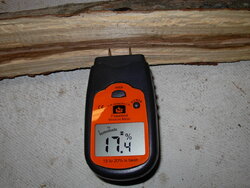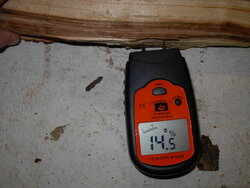I know it is said that woods moisture content should be taken at room temperature ~70*. Is there a percentage that it is off by when cold/frozen, or is it so varied that it is best to just check it at room temperature?
I ask because I'm low on wood and will be gathering some possibly close to seasoned wood, and don't want to see 20% while rooting thru stuff, to get home and have it be 30% once its warmed up.
Any theories, or tests that have been done that can lead to a rough estimate?
I ask because I'm low on wood and will be gathering some possibly close to seasoned wood, and don't want to see 20% while rooting thru stuff, to get home and have it be 30% once its warmed up.
Any theories, or tests that have been done that can lead to a rough estimate?



